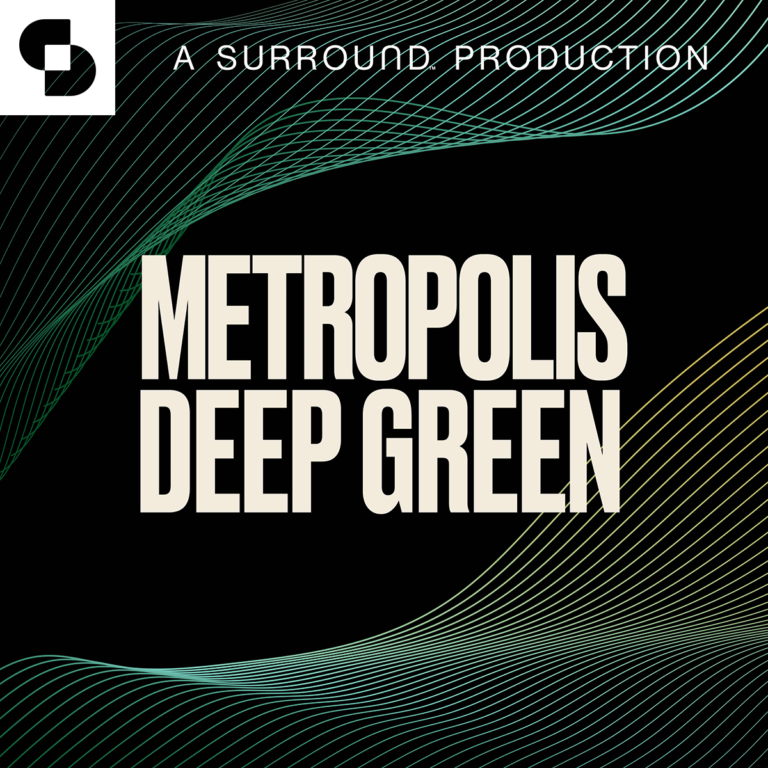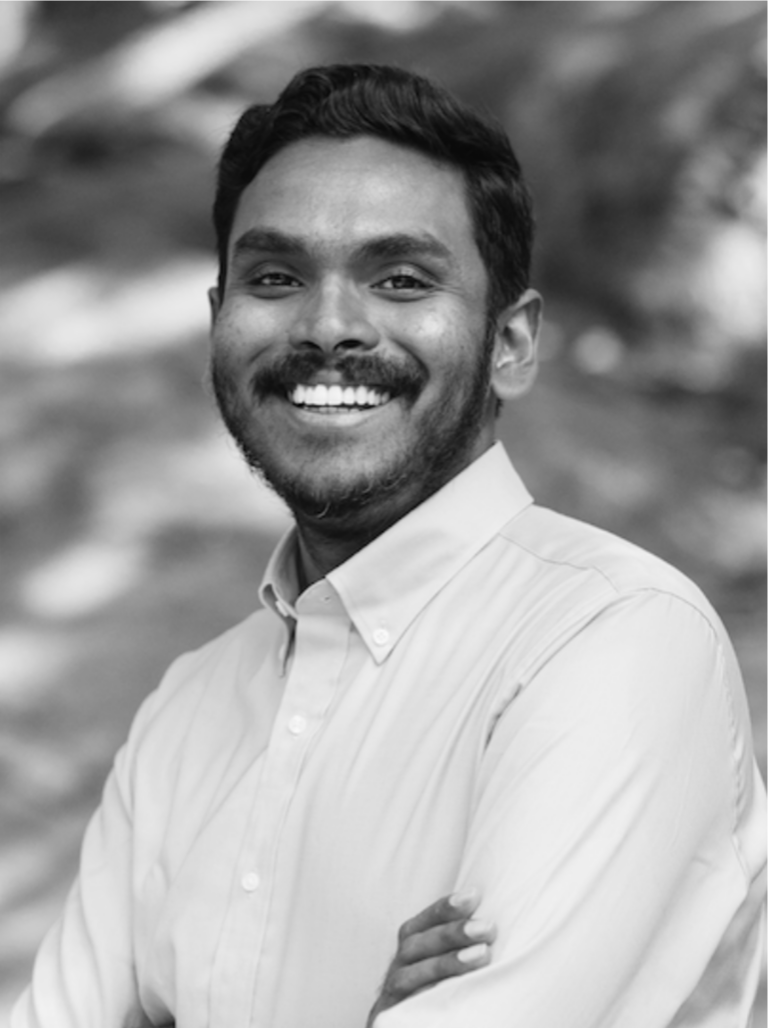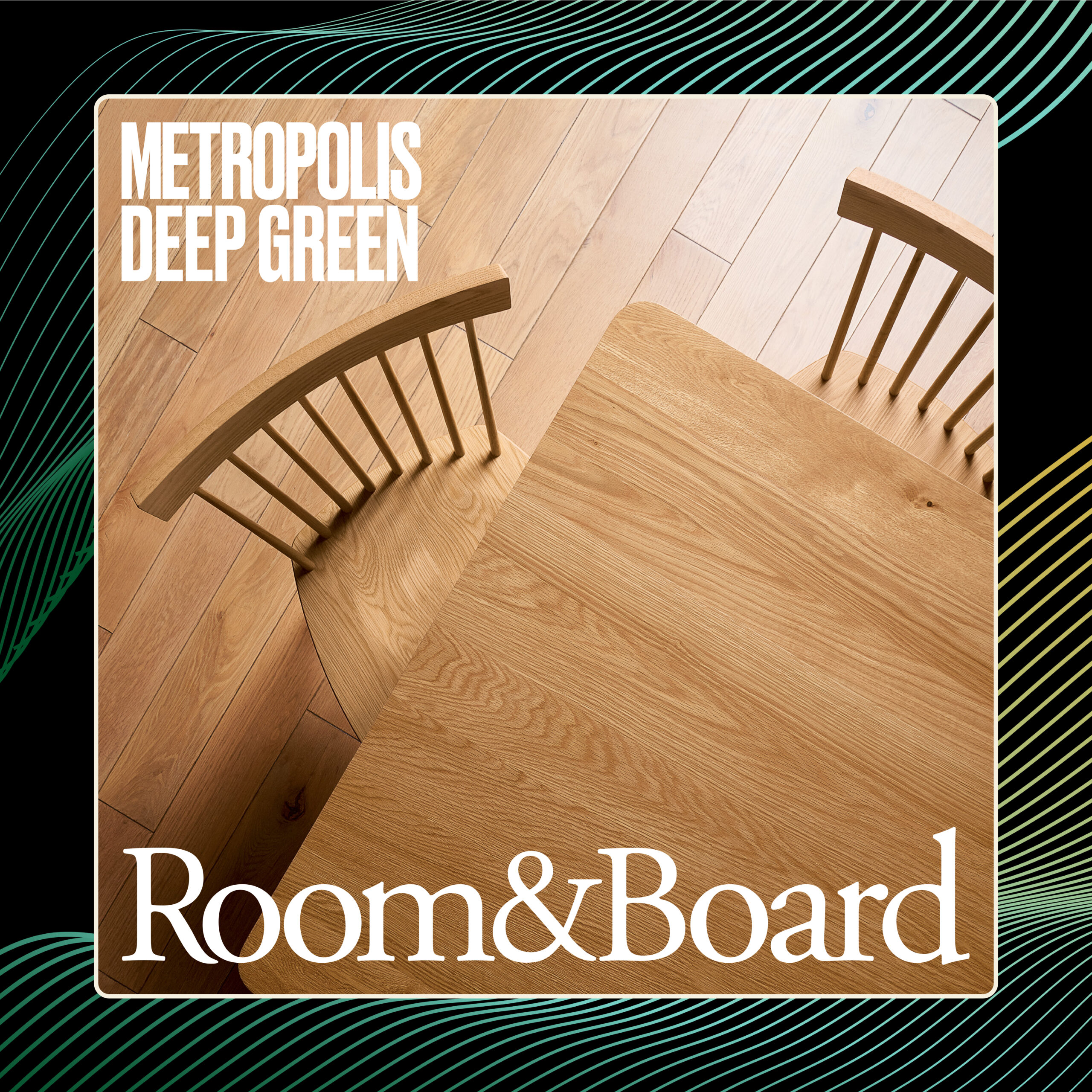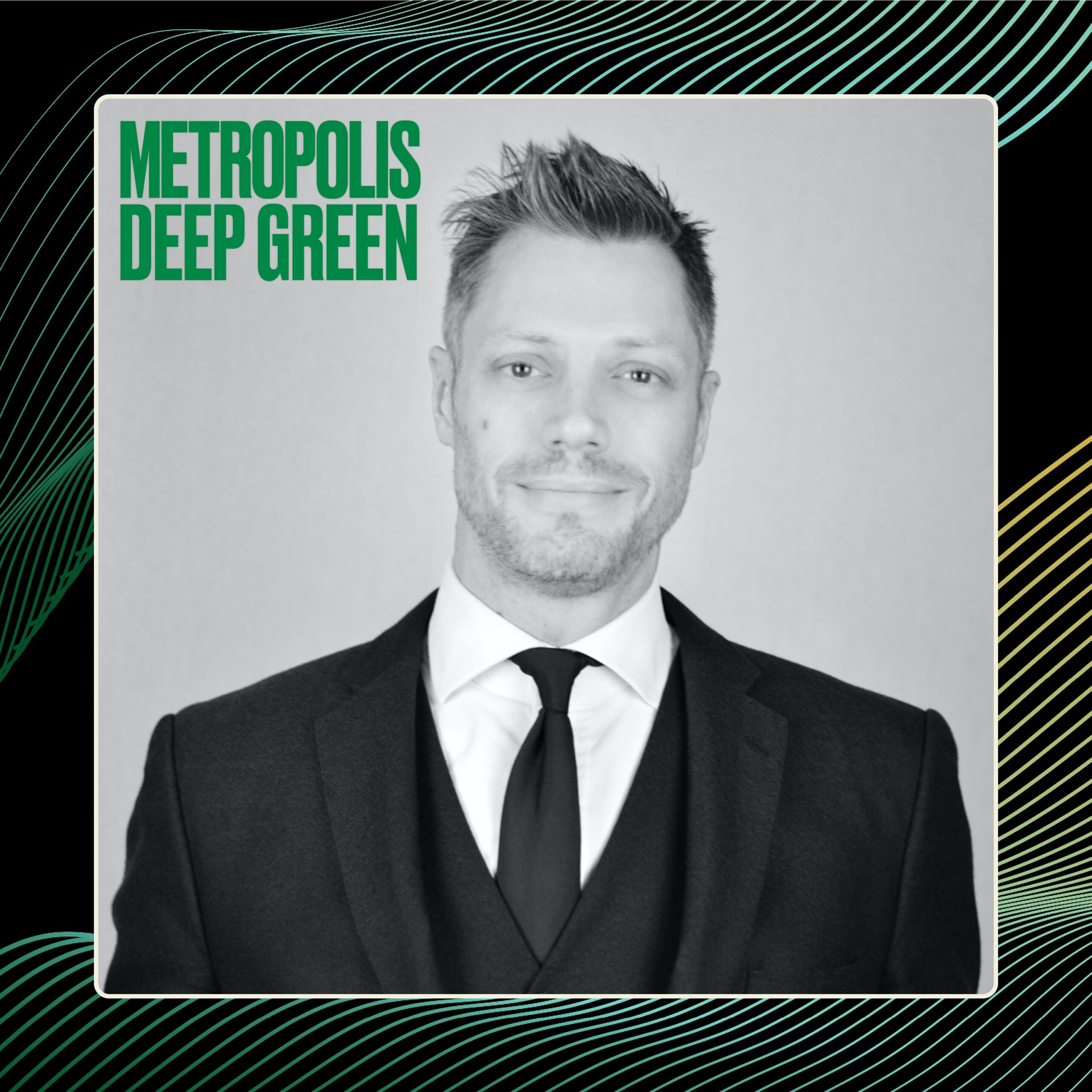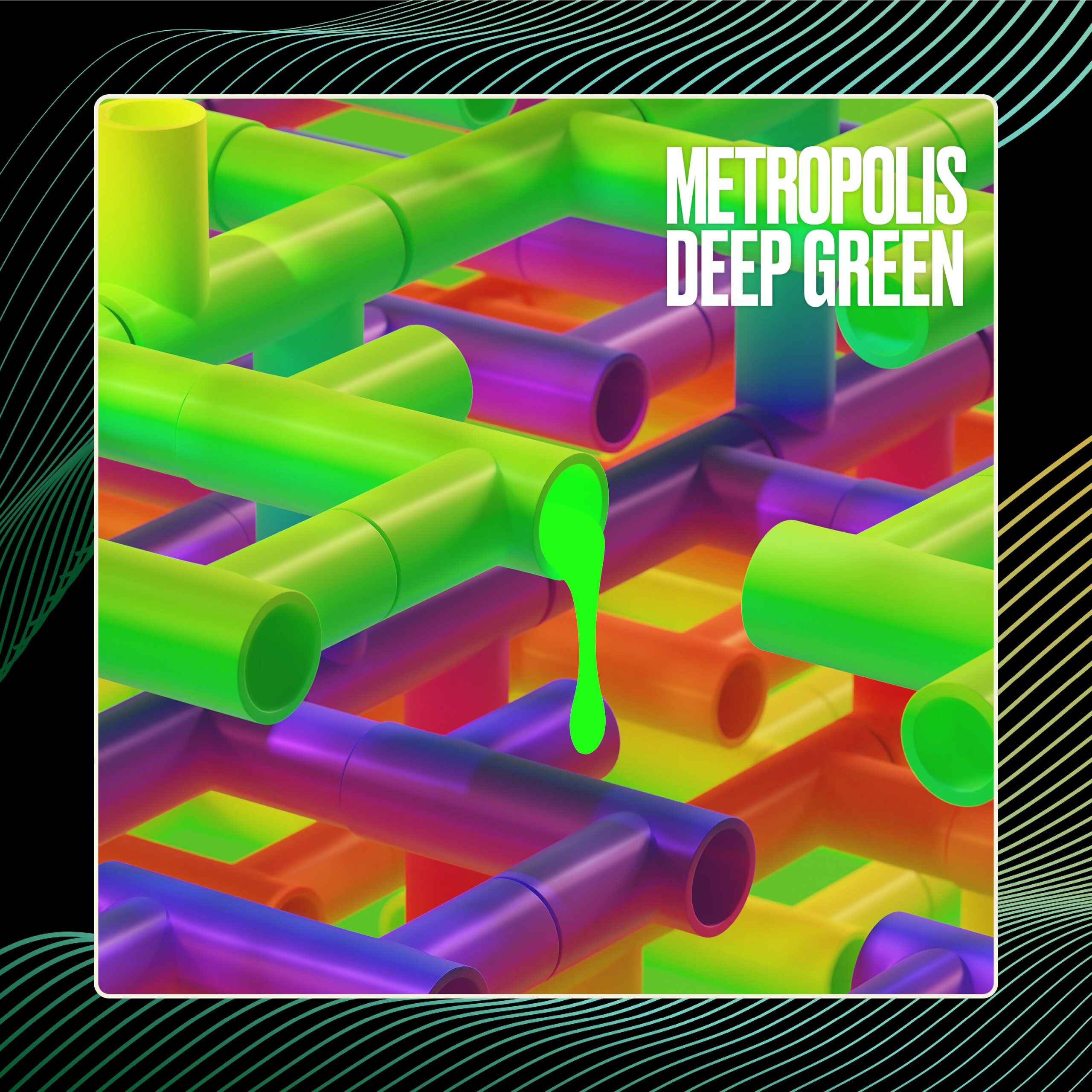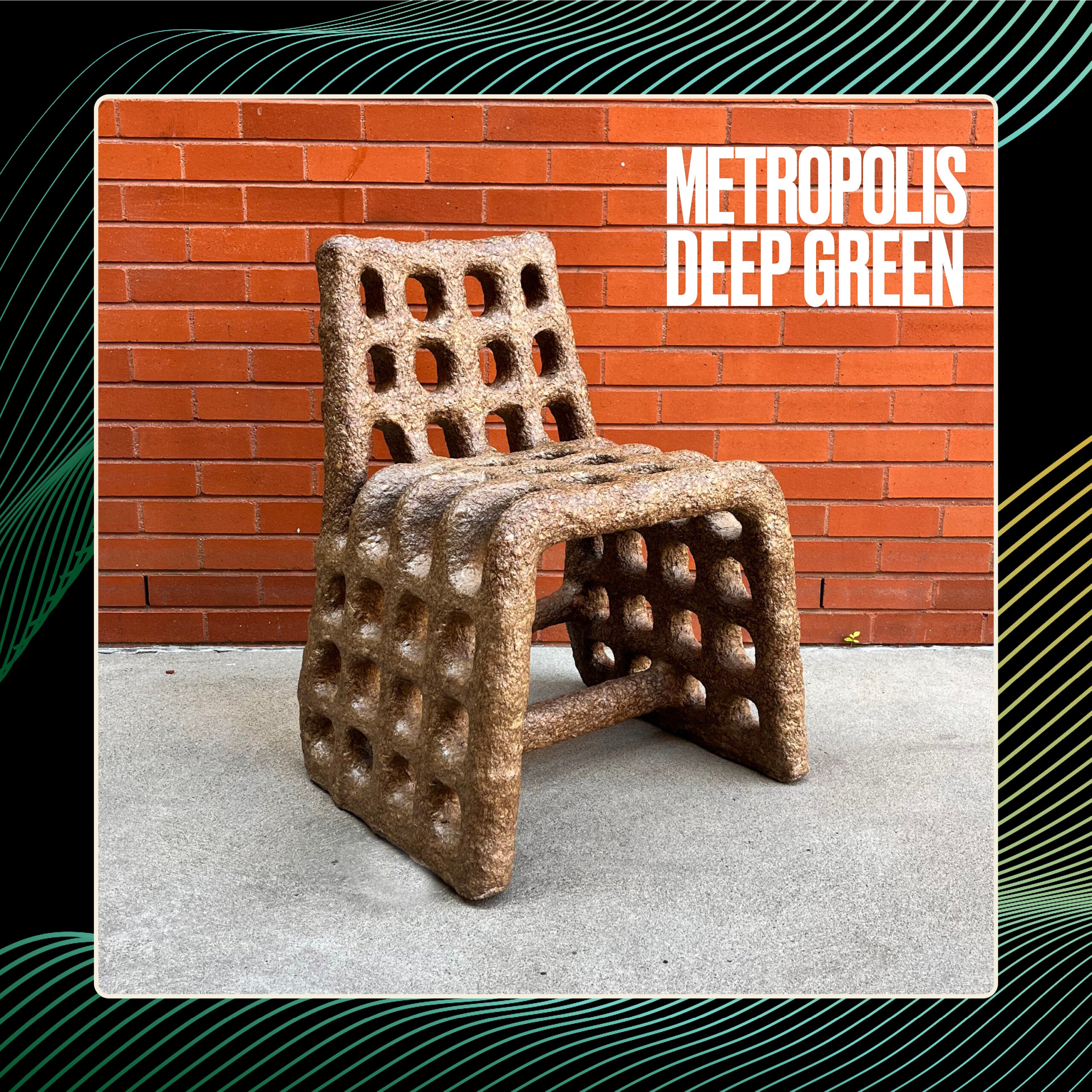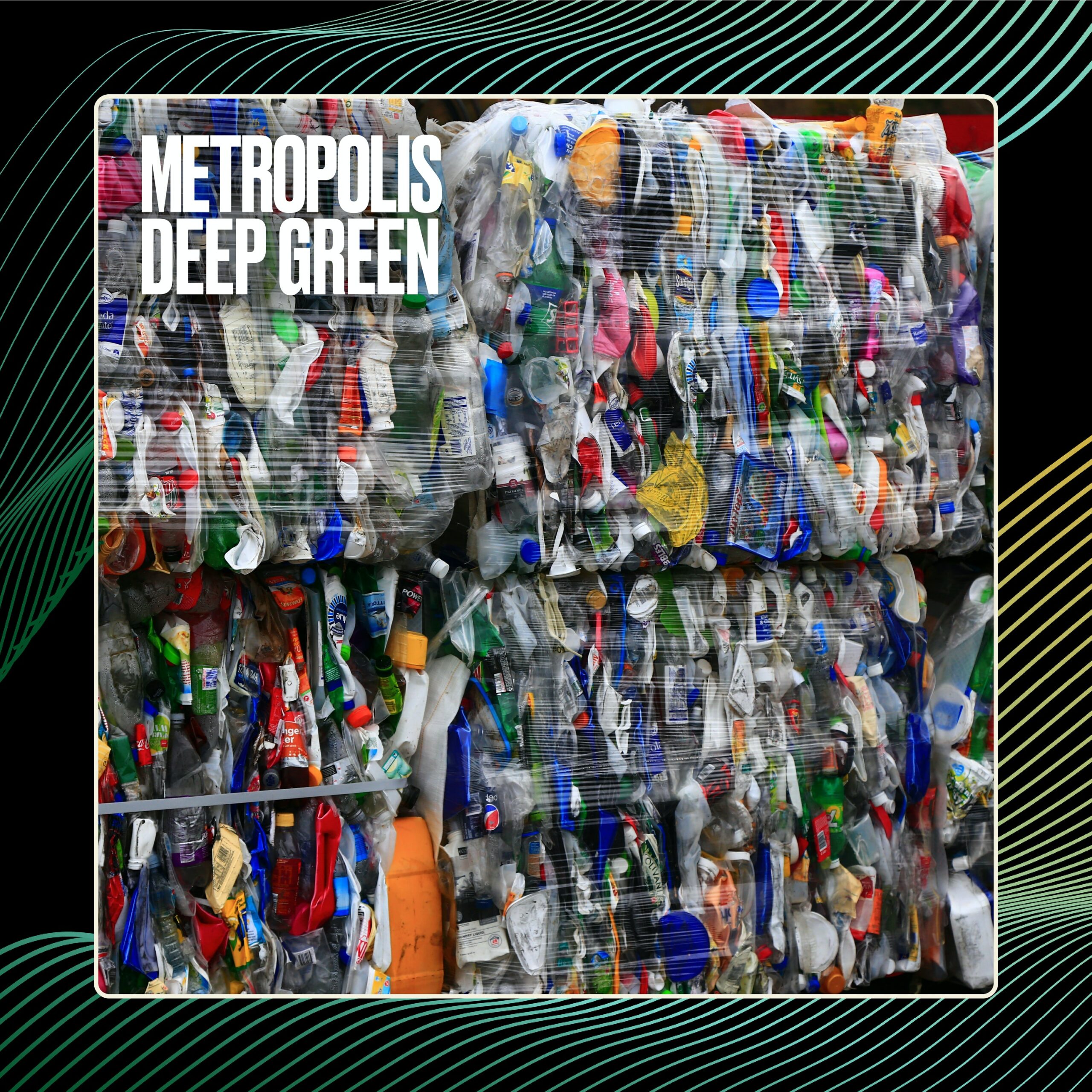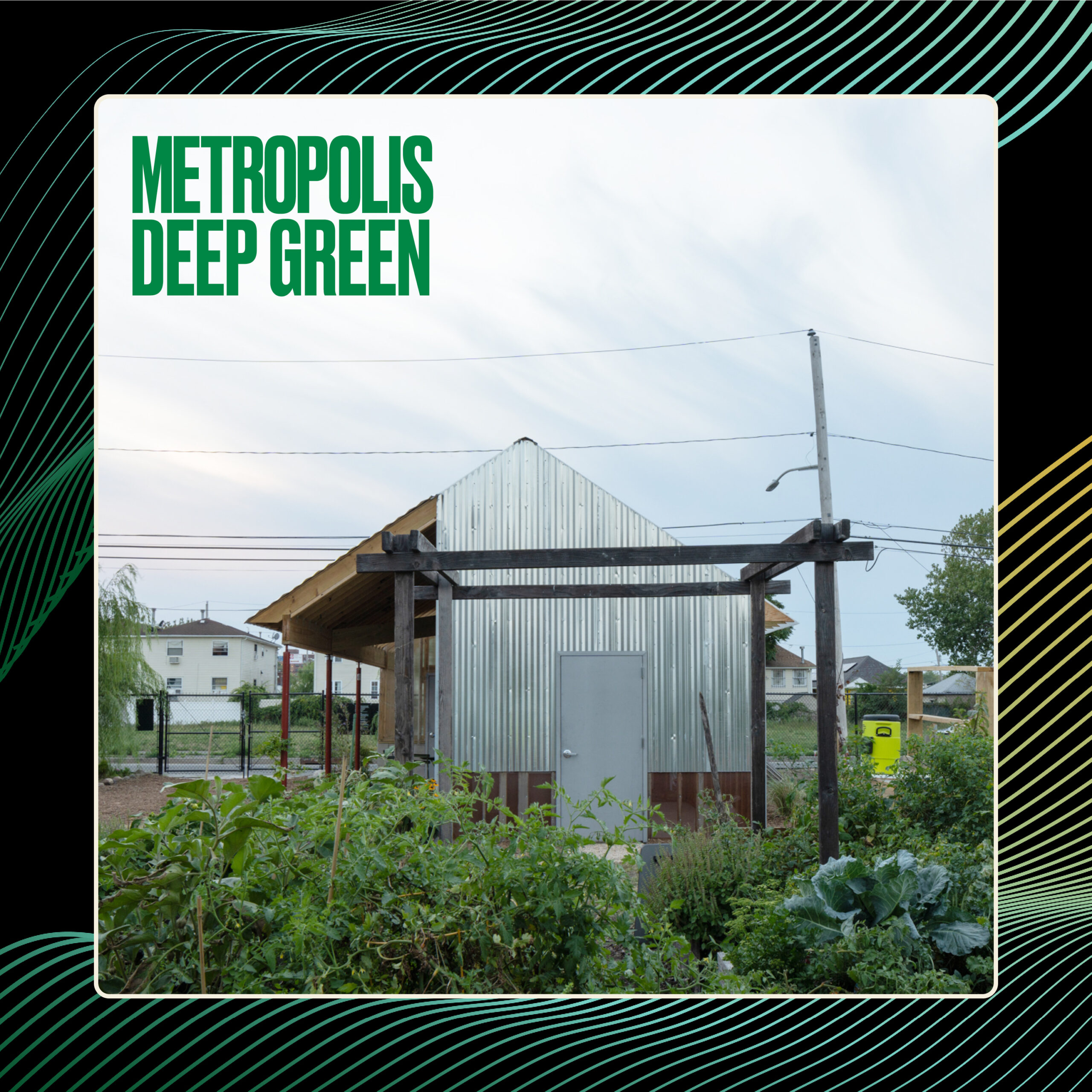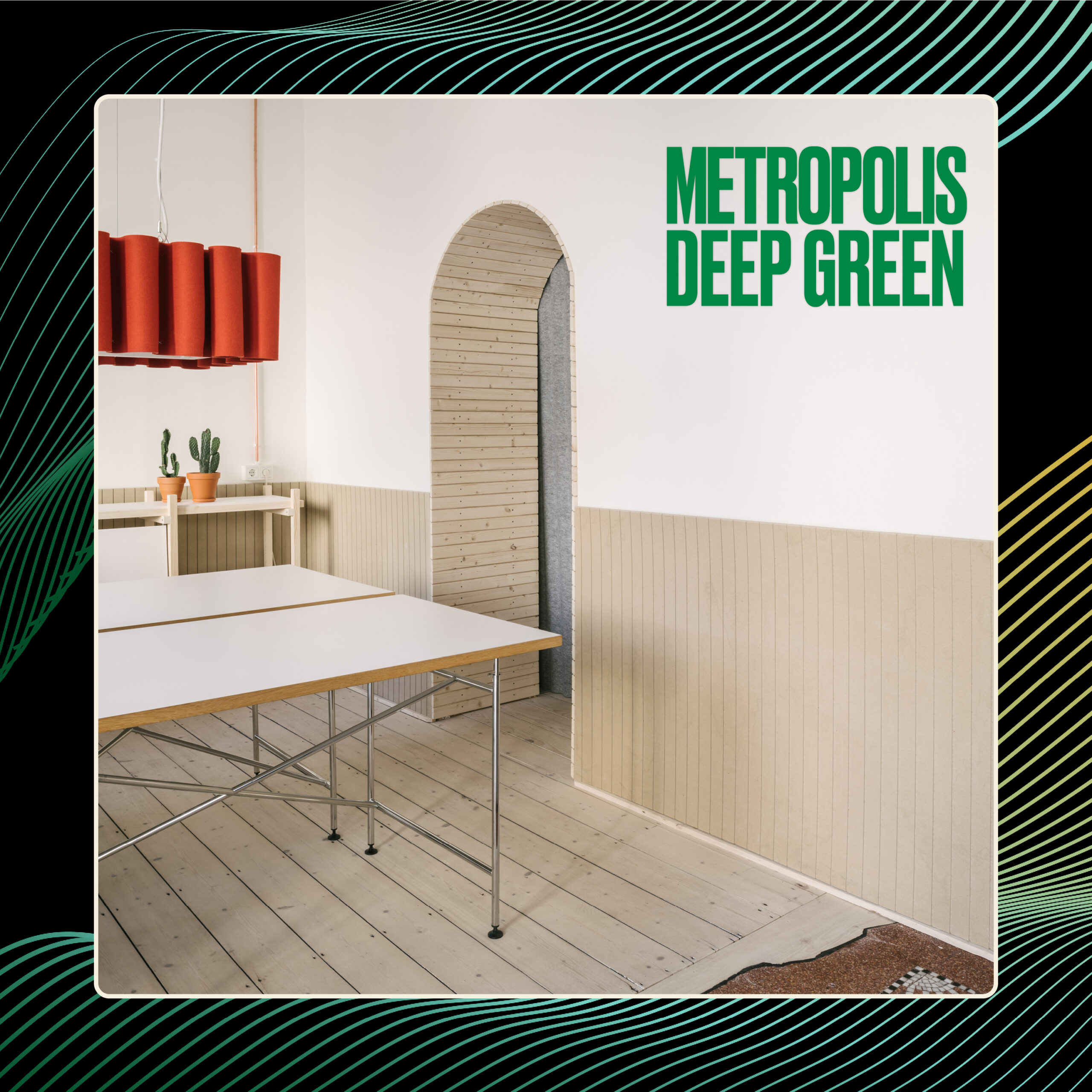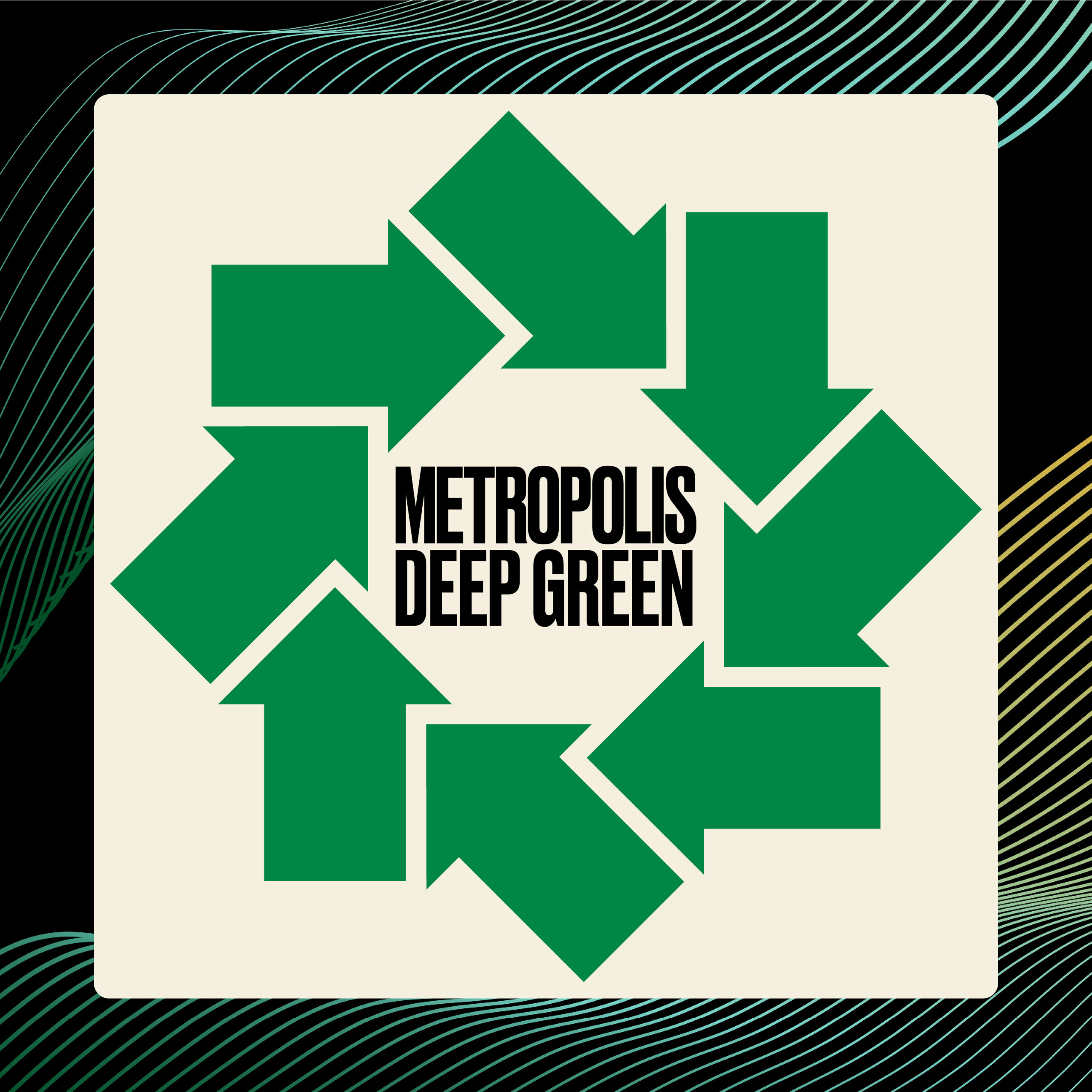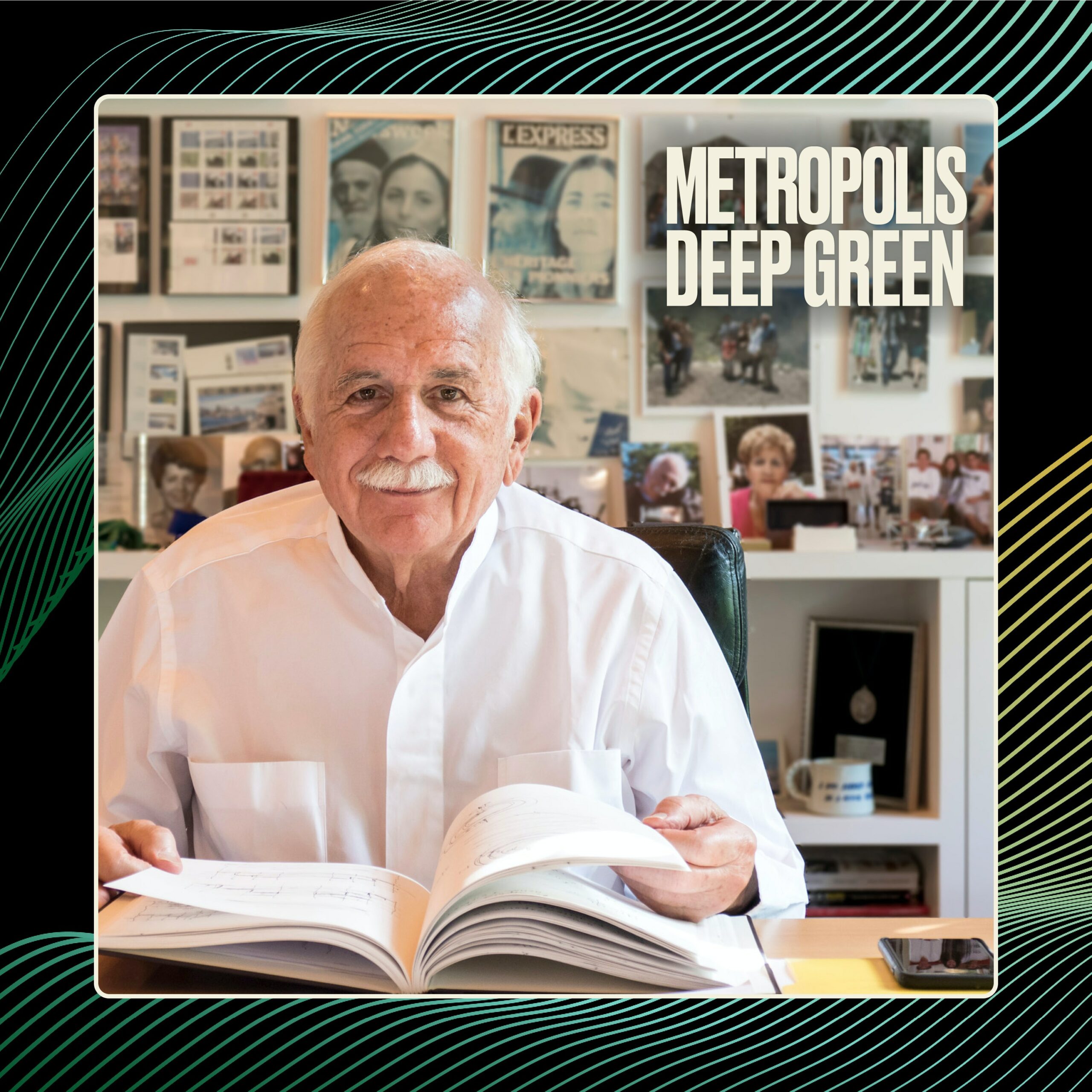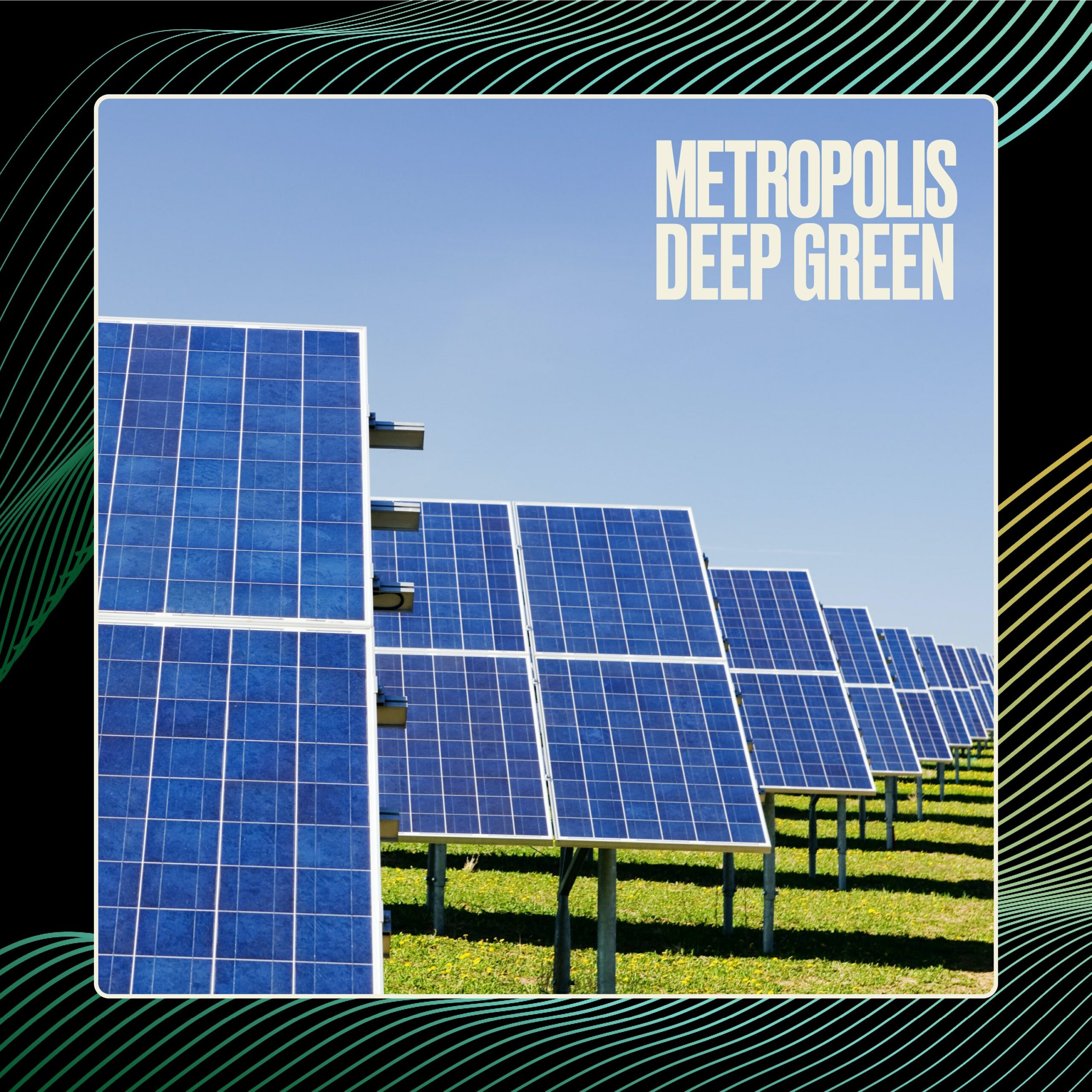This episode was recorded live in the NeoCon Podcast Studio Powered by SURROUND and Sponsored by SnapCab.
Renowned architect and Chicagoan Carol Ross Barney joins host Avi Rajagopal for our Summer Season premier. Ross Barney is a visionary about how people live their lives in cities—whether it’s through public, hospitality, or education spaces. Chicagoans know her best for the transformative work she did on the city’s Riverwalk, just steps away from where this episode was live recorded during NeoCon. Together, Rajagopal and Ross Barney discuss how the pedestrian walkway has opened so many possibilities for the city and how it is also emblematic of the kind of work that Ross Barney does. A sense of public good suffuses her work, from mammoth urban projects to her work on privately funded spaces, like the McDonald’s Chicago flagship. Join us to hear from Ross Barney about these landmark projects and others, exploring the connections between equity and the built environment, the complexities of sustainable design, and design as an opportunity to engage with people.
Connect with our guest Carol Ross Barney on LinkedIn!
Connect with our host Avi Rajagopal on LinkedIn!
Discover more shows from SURROUND at surroundpodcasts.com. This episode of Barriers to Entry was produced and edited by Wize Grazette and Samantha Sager.
Although the transcription is largely accurate, in some cases it is incomplete or inaccurate due to inaudible passages or transcription errors.
Avi Rajagopal: [00:00:00] Welcome to Deep Green, a show about how the built environment. impacts climate change and equity. I’m Avi Rajagopal, Editor in Chief of Metropolis. We’re recording live today from the NeoCon Podcast Studio, powered by SURROUND and sponsored by SnapCab. And I have a very special guest with me here today.
Here with us is Carol Ross Barney. Architect and really visionary about how people live their lives in cities, whether it’s through public space, through transit, through hospitality spaces, through education spaces. Carol has had a incredible career named Game Changer by Metropolis in our magazine. But most recently awarded the AIA gold medal.
Just a wonderful, towering presence in our industry. It’s such a pleasure to talk to you today, Carol.
Carol Ross Barney: It’s [00:01:00] great to talk to you too, Avi. It’s great to see you. Carol,
Avi Rajagopal: you work and live here in Chicago. And if Chicagoans know you best, it is for the transformative work you did on the River Walk, which is actually just a few meters away from us here at the Merchandise Mart.
It’s a wonderful pedestrian walkway along the side of the river that’s opened up so many possibilities for the city. And to me, it is a really emblematic. project for the kind of work that you do at Ross Bonney Architects. So, Carol, tell us a little bit about the Riverwalk. Give us a little bit of the story and what the impact of that space has been on your practice.
Carol Ross Barney: Well, the Riverwalk, first of all, I’ll start out by taking the chance to say that it took 16 years of my life to do the Riverwalk. And I am a native Chicagoan. This morning, I got an invite from a major law firm. They’re having a There’s summer party reception and they put in the reception and you’ll be able to look down on the beautiful [00:02:00] Chicago River.
I have to tell you most of my time growing up in Chicago, beautiful and Chicago River would not appear in the same sentence in the same statement because the river that wasn’t its role. It was polluted. It was ignored, which is kind of ironic because the river is really important in Chicago’s history.
Chicago’s presence, its importance is really because of its location in the center of the country, but because it was accessible to transportation routes. And early on, those were water routes. So the Chicago River was the quickest way. To get from basically from the northeast part of our country to the middle sections and the south and that put Chicago on the map.
So the river was always important, but because it was so important, it became very heavily used, industrialized, and for most of my lifetime, when transportation had moved to other modes besides water, heavily polluted. So, for [00:03:00] me, watching it change. has just been wonderful. As a Chicagoan, it’s changed the way we think about our cities.
And I think that’s the important lesson here for other American cities or just cities in general, or just about where we need to grow and go with cities. is we need to take resources like our rivers and make them active, make them contributors to the quality of life. And so the Riverwalk, it’s so funny, people say, well, how did you get that wonderful commission?
It didn’t start out as a wonderful commission. In fact, we had a lot of little jobs that we were doing for the Chicago Department of Transportation. We do a lot of transportation work. We do a lot of just very utilitarian work. We’ve always loved that because we think those projects are noble. They make our cities.
into places again, as I say, that are livable. So we started out with all these little projects. One of them was replacing the railing on the Michigan Avenue bridge, which was really interesting project because it was historic, but there were also projects [00:04:00] like just, you know, fixing this piece of the river or this piece.
And one of the pieces was the city had undertaken a project to restore Wacker. It had been in service for 70 some years. It’s falling apart and there was TIF money and part of the TIF money the city allocated to do a master plan for the Riverwalk. The Riverwalk was a dream of Chicago architects and planners and politicians for a very long time thinkers and this was a concrete chance to do.
A piece of that to do the starting piece. So we completed it in, oh, let’s say, wow, that was a long time ago, like 2005, 2009. It’s where the Chicago Vietnam Memorial is now. It’s called Wabash Plaza. So we did the master plan at that point. And we also got to build this little piece, this little initial part of the Riverwalk as part of the Wacker Drive TIF renovation.
It was so popular. People had no idea that it would be so popular. Chicagoans started eating their lunch on the river. [00:05:00] And this is a river that we turned our backs on. And when Rahm Emanuel became mayor, he decided that this was going to be his favorite project and he would. Find more money. And eventually we did a mile and a half in downtown Chicago, which is great.
I mean, it has huge number of tourists. Uh, one of the claims to fame is when COVID happened, the first thing that the mayor closed, because there were so many people that she didn’t want to be close to each other, she closed the river walk. I don’t, I don’t know if that’s particularly good, but it happened.
But if you come to Chicago, people will say to you, well, just go down by the river. It’s a unique environment. You see Chicago’s skyline from a totally different viewpoint. You can have a drink. You can stroll. You can people walk. And it’s a space that wasn’t available in the downtown. And um, We have it now and it’s wonderful.
The other great piece though, is it made Chicagoans aware of the river. And since then we’ve done other projects in other parts of the city. A lot of them are community based. Chicago has [00:06:00] about 35 miles of lakefront, 34, 35. And people come here and they say, I can’t see to the other side of the lake. Wait, this isn’t a lake.
It’s an ocean. Actually, it’s not. It smells totally different than the ocean. But, all of that land is almost all in public lands. We have wonderful beaches. It’s only on one side of the city. So, people who live on the west side and the south side, and some of the really under invested neighborhoods, they may have never been.
The thing that’s amazing about the river, we have 155 miles of river in the city, they go through neighborhoods. So there are potential green spaces and recreation spaces, essentially for places that are underserved. It also creates a great connectivity through the city. I think someday, this city, and hopefully many others, you’ll be able to get on the Riverwalk.
The river. You’ll be able to walk or bicycle basically through the whole city.
Avi Rajagopal: Yeah. You know, one of the reasons I picked the river walk as our starting point, of course, because it’s such a beautiful space [00:07:00] and folks who are listening, if you visit Chicago, you have to, you have to stroll on the river walk.
But the reason I picked it as our starting point is because, you know, One of the things we like to talk about on this podcast is equity and the connection of the built environment to equity. And there’s a way that the sense of what is public good that really, you know, suffuses your work, whether it’s transit stations or the door walk, or even your work for private clients.
That’s really incredible. Can you talk a little bit
Carol Ross Barney: about that? Yeah, I can. It’s something that I’ve been interested in a long time, and I’d like to talk about it from two different vantage points. One, me personally. The reason I do what I do, the reason I love what I do, is because I feel That it’s my purpose, and essentially everybody’s purpose, to leave the planet better.
I think that’s why I am an architect, why I’m a planner. And I’ve found that to do that, I have to believe that I’m an owner of the space. So when we work on a space in the studio, [00:08:00] we think about owning that space to the point where I think it’s the obligation of designers to be citizens. They need to be citizen designers.
You are the client. As well as the designer and when that’s in the back of your mind or the front of your mind, it’s much easier to make decisions that are based on concept of principle and equity. The thing that’s interesting about design and designers, I feel this moral responsibility, but there is a business responsibility too.
So it’s a combination of those two that for me, the balance is really hard. But when I find that balance. I know I’ve done a really good project. The second thing that’s interesting about public space, and I’m really proud about the Riverwalk, the Riverwalk is unique among American public spaces in the last few years, because it’s completely.
publicly funded. It is completely a public space [00:09:00] and I think that we’re in an interesting point in time now. You can talk about income equity, for example. It’s been a huge discussion, is this what’s wrong with our country? Do some people have so much money and some people have so little money that we’ll never have this great society where people can live healthy, happy, And I think that shows up in public projects.
The Riverwalk, like I said, was all paid for by the city. So the commitment, it’s interesting, it was actually paid for by a loan from the federal government. But the city is on the line for it. So this is a decision made by and for the city. The people of Chicago, but a lot of public spaces. Now cities don’t have the resources or the public will to do by themselves.
I’m going to pick on a couple, the High Line. Great seats. I love that space. I think what it’s done for New York is extraordinary. The quality of the design that takes my breath away, but it relies on. Philanthropy, and I think that’s a [00:10:00] problem rather than an asset. Oh, it’s wonderful that those corporations and people, Little Island’s another one, corporations and people, gave the money to help the city.
But we need to be committed to these spaces. I was just in San Francisco and I fell in love with Salesforce Park. It’s really lovely, but it’s sponsored by a company. A company did this. All our ballparks are paid for by companies. And it’s like, we need the public will, which I think is just. Evening out society in terms of asset is what, and that’s what equity is.
Anyway, you’re going to get me on a political thing here. And I think that designers do need to be political, but I’m sure you want to talk about space too.
Avi Rajagopal: Yeah, absolutely. I mean, I think you do bring up something interesting. It is important. You know, who owns a space and therefore who is empowered to take decisions about a space?
And I think even though the design teams on those spaces have done amazing work within that public private funding framework, I don’t know how many decisions they took in spite of the public private funding framework. And I [00:11:00] think there is a certain onus on publicly funded projects in terms of who they’re answerable to and what mission their money supports.
So anyway, I’m not going to go on that tangent either. Yeah.
Carol Ross Barney: Bye. Bye. Go to hell. But I really do think that public space shouldn’t be a gift. It should be an expectation that we have for ourselves. Right. Exactly.
Avi Rajagopal: Absolutely. Because we deserve it. Our cities deserve it. What’s interesting to me about your practice, though, is also when you work on privately funded spaces.
There is still that sense of public good. And of course, I’m thinking about your work with McDonald’s. Just so our listeners know, Carol Rasparni’s firm, Rasparni Architects, worked on the McDonald’s flagship restaurant here in Chicago, which is the first CLT, mass timber structure in Chicago, extremely low embodied carbon, extremely low operational energy, extremely sustainable project here.
And then followed that up with. The McDonald’s restaurant in Disney World in Florida, which is a net zero restaurant. And if you think about the complexity of McDonald’s operations, I mean famously standardized [00:12:00] operations, the fact of being able to do net zero with that kind of a program is just incredible.
I mean, actually the restaurants are very hard to pull off as anybody knows in the hospitality sector. So how did you work with McDonald’s on those projects? Where did the idea of sustainable spaces come from there? And what were some of your takeaways from those projects?
Carol Ross Barney: You know, McDonald’s called us and we were a little bit surprised because we have very few corporate clients and we wondered if they had called the right architect.
But it turned out to be a really Profitable relationship. And when I talk about profit, I’m not talking about dollars in the bank. I’m talking about what they got out of it, what we got out of it, and what that community, that society got out of it. When we met with McDonald’s, that Chicago flagship had not been remodeled for a number of years.
I’m trying to remember, maybe, it probably was going on 20 years. The restaurants aren’t remodeled on a regular basis, and their design standards change. And it’s an interesting site because it’s a full city block, right in River [00:13:00] North, which is one of Chicago’s most vibrant and quickly developing neighborhoods, most economically desirable.
And they just wanted to put a restaurant on it. And they came to us with the idea that their major idea, the redesign, was they wanted to be a good neighbor, which thrilled us. So we said, okay, fine. We’re your architect. We’re a board. This is what we want to do too. But the more we explored their corporate values and mission, it became really obvious that they had really high expectations and goals for themselves.
In fact, if you haven’t looked at McDonald’s standards and goals for the environment, for sustainability, you should, because they’re very admirable. But the thing that was interesting to us is most of them were concentrated on their supply chain, buying the food, growing the food, buying the toys, I guess, whatever, buying the paper.
And that makes sense because if McDonald’s says, Oh man, we’re only going to have sustainable potatoes, all potatoes become sustainable. They’re that [00:14:00] influential in the marketplace. They had talked about their buildings and they’re a huge owner of real estate. They may be the largest real estate owner in the United States because they own the actual buildings.
And then what they do is they lease them to franchisees. In any case. They had looked at making their buildings more efficient, more sustainable, but it seemed like too heavy of a lift. So we told them that we thought that being neighborly, we could do that. We could make it a better place in the neighborhood, that we could make it a good neighbor, part of that neighborliness.
was to make the building as sustainable as possible, too, and as healthy as possible. And they thought that was a great idea. We set the high standards in our office because they said, well, you know, we’ve never been able to make LEED, which, for me, LEED is measuring the skid. You have to measure against something.
There are probably more important ideas than LEED, but that’s a really good place to start. They said, well, you know, we haven’t been able to do this. And we said, well, we’re challenged. We’d like to make [00:15:00] this a LEED Platinum restaurant. And they were very supportive. This is a flagship, so it’s not, you know, your standard rollout, so we were able to do some things that probably will be done and roll out soon or in the future, but it was a wonderful relationship.
We did do everything from carbon to energy, we looked at them critically, and we tried to, for me, the best designs are the ones that solve multiple problems and they work on multiple layers at the same time, so we were able to talk about carbon and energy and daylighting. and healthy air and healthy space by making this garden like restaurant.
McDonald’s is extraordinarily proud of the restaurant and so are we. Is it the end all and be all? No, there’s still all kinds of things that I need to do that McDonald’s needs to do but it was a really great collaboration. So right after we finished that one they said well we have another one in Disney World and this time they set the bar.
They said, we want you to make this restaurant net zero. [00:16:00] I was like, oh no. Cooking food, especially cooking fast food without a big box, to make that energy efficient is terribly hard. It’s notoriously hard. In fact, we still haven’t really solved the carbon piece of it. But we worked with them in Orlando at Disney World, and that restaurant is about to be certified as living building net zero energy.
It was a really good design process because the thing about energy, why it’s a little misleading is you can make any building net energy zero. If you put in enough renewables, I, okay, so we have this little hamburger stand and you make the next two or three parking lots full of solar collectors, it’s net zero, but what does it really tell you?
It doesn’t tell you anything about what we need to make this planet up, you know. Save it. Stop abusing it. In any case, that one was also a really, a great experiment. McDonald’s continues to work on the efficiency of their restaurants. And I think that it’s a really interesting case study to see how you can put together the will [00:17:00] of the owner and the goals of society and come up with a better product.
And not just a product, but a way to go forward. Because, like I said, we’re not, um, yeah, absolutely.
Deep Green will
Avi Rajagopal: be back after a short commercial break.
I think what’s really amazing about that project is working with a client like McDonald’s, with those complex operations and moving the needle with them. Did you come away with any insights on how one, how an architect inserts themselves into a really complex operations, complex programs, and makes room for change.
Carol Ross Barney: Yes. Actually, we learned new things on this project, but it also made us believe some of the things we had discovered before. One is that design It’s not a thing, you know, I like that [00:18:00] design is a proper sentence, but design for me, and I think for most designers is a verb. It’s a process and that process necessarily includes a deep and complete understanding of a components and how they layer together and how they fit together.
It’s that understanding that allows you to make changes like McDonald’s made and like we made in the flagships. So the sort of research phase, sometimes it’s really crazy because there’s so much competition for fees and low price designs and stuff like that. There’s no time to do the research, so you get one just like the last one.
You won’t make progress if you do one just like the last one. You won’t find the answers that you were lacking because it’s just like the last one. That’s a really important idea. The other thing we learned is that often in the design process, communication is imperfect. And sometimes… If an idea or a concept appears to have a lot of merit, it may [00:19:00] fall on the cutting room floor too often.
So, we learned that we have to rule of thumb in the office, is if we really believe something, we have to tell it to the owner at least three or four times, at risk of being dismissed, because that’s what they’re paying us for. And, you know, everybody has a different seat at the table, and you may not get all the information, you may not see the whole problem the same way or at the same time.
And so, if you have… An important idea. If you have a good idea, don’t throw it away just because it’s not properly discussed or vetted. So we’ll go back and back and back. And so some of the ideas that we did with McDonald’s were just like that. For example, we didn’t start out with renewables on Chicago.
That was an idea that came back two or three times, you know. Our original idea, the solar panels in Chicago are on a big, uh, shade structure. And we did it to make the park that the restaurant sits in, we did it to make some shade, some immediate shade. But after [00:20:00] we looked at it, we said, oh boy, this is a great opportunity to do renewables too.
And the two eventually worked together, but it took, we had to put it in several times. So I think communication is imperfect and you should, you’re being paid for your expertise. Don’t not give it. That’s worse than, than, you know, getting. I
Avi Rajagopal: love that. I think that’s absolutely marvelous because the way you know it’s a good idea is that it has multiple dimensions and multiple benefits.
You know, like that shade structure and the photovoltaics, there’s a way that a good idea satisfies multiple
Carol Ross Barney: needs. That is so essential. I’m so glad you said that. I’ve believed that for a long time, that if it only does one thing, it might be cool, but it’s not good enough.
Avi Rajagopal: Absolutely. You’ve mentioned healthy spaces a couple of times, and I want to come back to that idea because I think there’s a way that you think about public good and healthiness, uh, in this intertwined [00:21:00] way that’s really interesting.
There’s a lot of conversation about healthy buildings at the moment, and there’s a lot of focus on indoor air quality and quality of flight, and those things I think are hugely important, but they add up to something larger than the sum of the parts. Can you talk a little bit about how you think about health in architecture?
Carol Ross Barney: Oh, I know, we were just talking, Abby and I are sitting in this amazing, we’re at Neocon, and it’s so noisy here, it’s, I mean, you know, Neocon is a super meeting, great party, lots of people, and we’re sitting in this little booth, we can’t hear a thing. It’s so lovely, it’s unbelievable. I think… That cities are super important to the future by cities.
I’m not talking, you know, there’s some absolutely amazing cities, great cities, Chicago, New York, Houston, and San Francisco, big cities with big populations. And they are, they have a unique set of problems and some. Unbelievable benefits. But when I say cities, I’m talking about the typical American city.
Like, you know, I think right now, and if you look [00:22:00] at data, the average statistical, metropolitan statistical area is like 270, 300, 000 people. A typical American city. I think that making those places livable. And livability includes good housing, it includes cultural resources, it includes educational resources, but it also includes quality space and peace and comfort.
Making those spaces livable, that’s the next problem to solve. Our society needs to pass. Because living in cities is where we’re most innovative, and so making that work is really important. But there are a lot of little things. And, and when I was talking about NeoCon here, and sitting in this booth, noise is one that I’ve always been extraordinarily interested in.
And right now our cities are, are primitive. We have, if you look at any city map, a noise map of the cities, where you’re near a highway, or you’re near an airport, it’s always noisy. You almost couldn’t work in that space because the noise is so loud. I [00:23:00] think that that affects livability too. So, how does that get down to a designer?
Those things, noise, light, healthy air, have an effect on the quality of space, and the shape of space, and the experience of space. I gave you an example, we were talking, they’re repaving Lakeshore Drive right now, and they’re using a different pavement than the concrete pavement that was installed last time, 20 years ago.
And what’s really interesting to me is, it’s a bituminous based pavement instead of a concrete pavement. And the road noise, the wheel noise from cars near this road has gone down tremendously. I would guess that the decibels have probably been cut in half. And I’m sure that that wasn’t in the specification.
Like make the road quieter. But I think that that type of discussion has to get into our, our city standards and our design standards. And it has a lot to do, to do with equitable occupancy of a city too. If you look at the neighborhoods that are most disinvested, they’re the ones that have problems with those types of pollution, [00:24:00] noise and light pollution.
We can solve these problems.
Avi Rajagopal: Absolutely. What I love is how you instinctively point to those intersection areas between health, equity, climate, energy. They are in some ways inseparable from each other if you’re just looking through the right
Carol Ross Barney: lenses. Yeah. In fact, I think for cities, one of the most important things right now is equitable housing.
And people always think about it as just affordable housing, but I think it’s more than that. I think it’s improving the neighborhoods, and it’s environmentally improving the neighborhoods, and obviously economic opportunity. Housing singularly may be the most, will make the biggest change in people’s status.
Could you imagine looking for a job if you don’t have a livable home? I mean, you can’t be productive because you have this basic lack at the very, at your very daily existence. I think we can do these things. What I think is interesting, when I was in San Francisco a couple days ago, the cities that are paying a big [00:25:00] penalty post COVID are the ones that did not build affordable housing.
And now that we don’t… You can work for, you know, a big company, and not in that company’s headquarter city now. That didn’t happen before COVID, and you could do that now. So basically, people are moving where the housing is. And cities that neglected affordable housing… They’re going to be hurt. They’re going to have to fix that.
Avi Rajagopal: Yeah, and, I mean, they’re hurting now. And, you know, I think they’re starting to feel the lack of that. Again, you know, we come back to this idea of certain things that are for the public good. You know, sometimes private enterprise or markets are not able to comprehend the connections between public good.
and their own self interest. And those connections are always there. I think those connections in the built environment and buildings seem to come alive in a very particular way. And I think that’s again, so hugely evidenced in your work. I’m going to pull another thread here. We’ve been talking about so many community projects [00:26:00] and you mentioned, you know, after the Riverwalk, there’s lots of communities you’re engaging with across the river, but you know, you’ve done transit stations.
And of course, Metropolis, we published your beautiful work at the Railyard Park in Arkansas. And There’s also an, a way that a design project becomes an opportunity to engage with people. Can you give us some examples of how your firm does that community engagement work and how it has been rewarding for you or how it has impacted your practice?
Carol Ross Barney: I’m glad you asked that question. I think that part of design education has been, I don’t know if we’ve called it engagement, but any design curriculum, any design program you start out by saying, find out what the user needs. That’s engagement. Interestingly enough, though, I think it can become sort of wrote or check the box, like someone gives you a program.
Okay, that’s my engagement. We, I had a really interesting experience at sort of the beginning of my career. We were hired to do the replacement building for the [00:27:00] Murrah, the building. The Oklahoma City Federal Building, which was destroyed by a terrorist bomb in 1995. And I was thrilled when we got this commission.
It was the first job I ever got out of Chicago, out of Illinois. And after being… Absolutely thrilled. I was absolutely terrified because I, when I was in Chicago, when I was working in my town, I know this place. I know it intimately. I know every neighborhood. I don’t know every neighborhood. I know the neighborhoods.
And if I don’t know them, I know where to find the information. And so all, while I was thrilled, I thought, Oh my God, I don’t know anything about Oklahoma or Oklahoma City. And my reaction, my personal reaction is to go on an intense field trip. I spent two weeks just driving around Oklahoma, trying to find it out.
But my client, the General Services Administration was having kind of the same reaction because when even though Congress said, we’re going to replace this office space, nobody’s chasing us off of our federal space. The tenants, the federal [00:28:00] workers who had been in that building didn’t want to come back.
So GSA is going, Oh my God, you know. We, we don’t know what’s happening here. It was such a unique situation. So, they commissioned us to do what we now recognize was our first engagement services. You know, beyond what normal design services would be. And, um, we had public meetings with the people of Oklahoma City.
We had individual meetings with city officials. We had meetings with the people who were in the Murr Building the day it was bombed. So, we had meetings with the employees from Housing and Urban Development, HUD, and some of them were heartbreaking meetings, but we asked a lot of bad questions. We didn’t know how to do this, but we learned.
I’ll give you an example. We did a survey of the federal tenants, the people who would be in the building, and we asked them what their primary objectives for the building were, and the top answer was no parking near the building, and the reason that they didn’t want that is because Timothy McVeigh, the bomber, [00:29:00] parked his truck right near the building.
That was the problem. And the second thing they wanted was they wanted close, convenient parking. And they sound like they’re not the same, you know, what, how could this happen? But even though we asked a bad question, it made us understand what it would take to make that building work. So anyway, we learned a lot.
And we have done that type of engagement and tried actually to convince Agencies, governments, clients, that this type of enhanced service is really important to them. And we have more and more interest in it now, and we’re better at it than we ever were. We have all kinds of things in our toolbox, but I think one of the things that I would like to say about it, it’s great, it’s great.
It’s making for better spaces, but I think there’s not really a full understanding of what the major benefit of it is. It’s true that you find out what people want. Then you might find out some really interesting things. But the most important benefit is, is it brings those people and makes them [00:30:00] stakeholders in the project.
Basically, it builds a consensus. It builds a force of people who want that project to be successful. So even it can be the most beautiful design, but if it’s ignored or unloved. It’s not going to be successful. And I think that early engagement where you build a constituency and you build it by listening, I’m not saying you just, you know, fool them and then their constituents, when you build that constituency, that’s a lasting value of engagement is the constituency that you build.
So right now I’m doing a really hard project building. We’re doing a park on the river. It’s at the very end of the river, it’s DuSable Park, so it is a park that’s being dedicated to Chicago’s first non indigenous settler, who was Jean Baptiste DuSable. And he’s a very interesting man because he was half Jamaican and half French, and so in Chicago, our very diverse city, we’re one of the most diverse cities, this is [00:31:00] important.
This is bringing more people into the conversation. But there are other things that are happening at the same time, understanding who we are, and who we’ve been. So, building the constituency is absolutely essential on this project, or nobody will like it.
Avi Rajagopal: Absolutely. You know, I think if we accept that the act of building is essentially an act of relationship forming, that you’re creating a situation where You hope that relationships will take place, but also it’s our relationship as professionals with society as at large, or with a group of people who are using the building, or however you want to define that.
And I think the most healthy relationships are built through communication. And so if communication is not the basis of a design process, I feel like we must be
Carol Ross Barney: dooming it at the start. Yeah. It’s also based on inclusion, but the inclusion has to be meaningful. I mean, you can’t ask someone off the street, what should this design be?
They have no way of answering that question, but you can discuss [00:32:00] other things. They do have expertise that you need, and that makes them real members of that communication rather than just, you know, throwing darts at it. I think it should be colonial, don’t you?
Avi Rajagopal: Absolutely. Right. Well, I should say, I didn’t mention it at the time, but I should say that federal building in Oklahoma, Carol, I hope you won’t mind me saying this.
was the first federal building ever in the United States designed by a woman owned architecture
Carol Ross Barney: firm. Is that true? That’s what Ed Feiner, the chief architect at GSA, told me all the time I was working on it. I had an interesting experience though at AI. Also, I met for the first time Robin Carnahan, who’s the GSA administrator.
And this is kind of funny talking about not being in touch. She told me a great story that the, um, they have just remodeled that building, not remodeled it like, you know, change partitions. They remodeled it for energy efficiency. It’s 25 years old. It was completed in 2004. 20 years old. So, um, they’ve remodeled it so it can move forward, which I [00:33:00] thought was really great.
They put battery storage in that building. They put in renewables. There’s collectors all over it now. They used the pieces that were really robust and just, you know, fixed them. And it was so great to hear that they’re bringing this building forward and, and that the building had a design that let them do it.
Yeah, it’s so important to have that overlap that you were talking about. This continuity, solving more than one problem at one time. When we did the building, it was a fly ash concrete, it had some mechanical upgrades that we thought were really amazing at the time. But just to see people pick up those pieces and take it to the next level is great.
Absolutely.
Avi Rajagopal: I think that’s what great architecture is about. It’s about, you know, that continued service to Whatever Publix may be a part of that building, and of course, uh, Carol, that’s the work that your firm is known for, and that’s what you’ve stood for all these years. Thank you so much for spending this time with us here at Deep Green.
We really, really appreciate it. Always a pleasure. Thank you all so much [00:34:00] for joining us as well. We’re recording live from the NeoCon Podcast Studio powered by SURROUND and sponsored by Snapcap. Thank
Carol Ross Barney: you so much. Thank you, Avi.
Avi Rajagopal: Deep Green is a proud member of the Surround Podcast Network. Discover more shows from Surround at surroundpodcasts. com. This episode of Deep Green was reported by me, Avi Rajagopal, and produced and edited by Wize Grazette and Samantha Sager. I’ll talk to you again on the next episode of Deep Green, where we talk to the architect, Katie Ackerley, about housing that’s affordable and sustainable.

